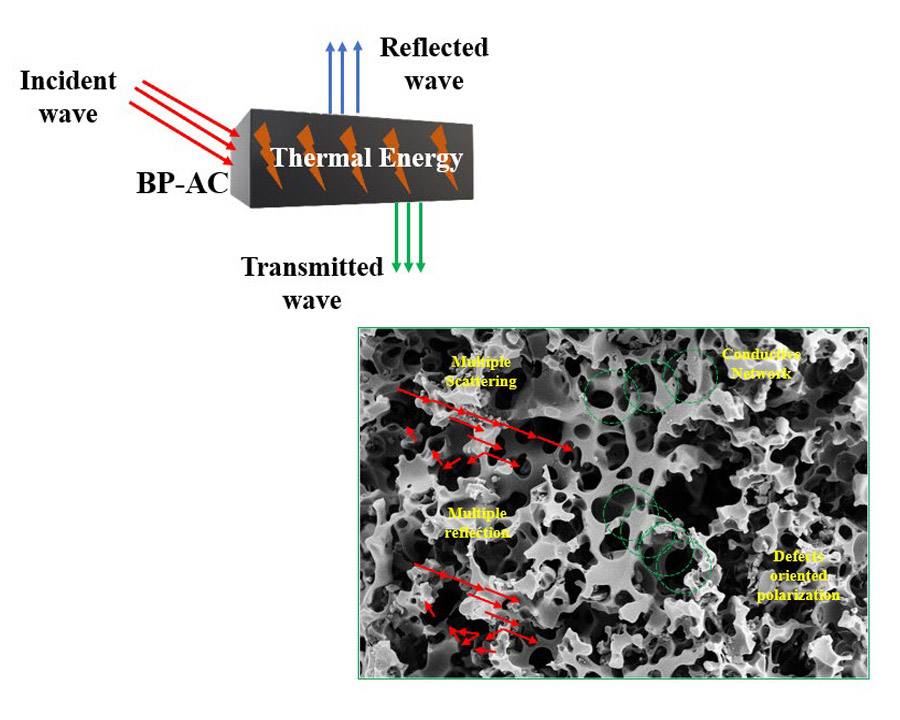Banana-peel derived activated carbon for microwave absorption at X-band frequency
- 1 Department of Physics, North Tehran Branch, Islamic Azad University, 16511- 53311, Tehran, Iran
- 2 Department of Fundamental and Applied Sciences, Universiti Teknologi Petronas, 31750 Darul Ridzuan, Perak, Malaysia
- 3 Department of Petroleum and Chemical Engineering, Jalan Tungku Link, Gadong BE1410, Universiti Teknologi Brunei (UTB), Darussalam, Brunei
Abstract
The rapid advancement in information technology, communication, and electronic devices elevates the need to develop suitable materials for microwave absorption (MA) which should have the properties of an ideal microwave absorber. Porous activated carbon from agricultural wastes has piqued the interest of MA researchers due to their distinct properties such as good specific surface area, high dielectric loss, good electrical conductivity, and low density. Herein banana peel activated carbon was prepared by activating banana peel precursor with KOH and carbonizing at different temperatures. The difference in the porous structure with varying carbonization temperature was visible in the FESEM image, validated by BET analysis. The Banana Peel Activated carbon samples exhibited good microwave absorption performance, with BP-AC700 displaying a minimum Reflection Loss (RL) of -40.62 dB at 10.72 GHz & 3.0 mm thickness. In addition, the obtained effective absorption bandwidth of 3.5 GHz spanned through the X band frequency. This exceptional microwave absorption was attained due to the sample's good conductive loss and Porous favourable morphology. This study inspires the development of future facile functional agricultural waste-derived microwave absorbers.
Downloads
References

Copyright (c) 2022 Hojjatollah Soleimani, Jemilat Yetunde Yusuf, Hassan Soleimani, Lee Kean Chuan, Maziyar Sabet

This work is licensed under a Creative Commons Attribution 4.0 International License.
Copyright
Authors are the copyright holders of their published papers in Synthesis and Sintering, which are simultaneously licensed under a Creative Commons Attribution 4.0 International License. The full details of the license are available at https://creativecommons.org/licenses/by/4.0/.
All papers published open access will be immediately and permanently free for everyone to read, download, copy, distribute, print, search, link to the full-text of papers, crawl them for indexing, pass them as data to software, or use them for any other lawful purpose without any registration obstacles or subscription fees.












